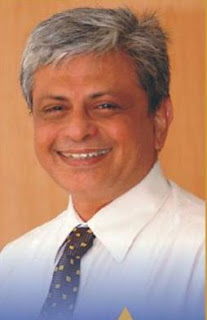The objectives of this short ten minute exercise -
- To learn a tool that will be helpful in work life
- To apply the learning within a few minutes of learning
- To use this as a morning ritual to start a great day
Step 1 - the warm up
Keep your journal and pen at hand
Sit in a relaxed position with an intent to go into a ‘flow state’ to learn something new
Take three deep, powerful breaths to lock in your focus and start the next step
Step 2 - the learning
About VUCA
VUCA (Volatility, Uncertainty, Complexity, Ambiguity) is a framework used to describe the challenging business environment. Developed by the U.S. Army War College in the late 1980s, it is now applied in business for strategic planning and leadership, helping organizations navigate rapid change and unpredictable markets effectively.
Volatility - Rapid and unpredictable changes in the environment
Uncertainty - Lack of predictability and incomplete information
Complexity - Numerous interconnected variables creating challenges
Ambiguity - Lack of clarity about the meaning or implications of events
Situations (examples) where this tool can be best used
- Strategic response to market disruption
- Navigating organizational change
- Managing a cross-functional project
The top three mental muscles (competencies) developed by practicing this tool
- Adaptability - Adjusting leadership style to evolving circumstances
- Resilience - Staying focused and composed under pressure or setbacks
- Problem-solving - Addressing challenges thoughtfully and decisively
A corporate story to understand the usage of this tool
Larry Page (Google) story - Revolutionizing search using VUCA
Larry Page exemplifies mastery of the VUCA framework in transforming Google into a global tech leader.
Volatility: The internet's rapid expansion created a volatile environment. How addressed - Developing the PageRank algorithm, making search engine scalable and user-centric. Continuous innovation, like Google Ads, further solidified its dominance.
Uncertainty: Uncertainty about monetization and competition. How addressed - Prioritizing user experience over short-term profits, introducing AdWords, which balanced relevance and revenue. Willingness to experiment birthed successful products like Gmail and Google Maps.
Complexity: Google’s vast ecosystem of products, employees, and regulations was challenging. How addressed - Streamlining operations with the "70-20-10" resource allocation model and fostering cross-functional innovation.
Ambiguity: Unclear markets and regulations in the space of AI, healthcare, and autonomous vehicles. How addressed - Moonshot mindset (setting audacious goals) and achieving them through transformative technologies like DeepMind (neural network models) and Waymo (self driving cars).
Larry Page’s ability to innovate, adapt, and lead in a VUCA world established Google as a tech pioneer, offering invaluable lessons for modern leaders.
A story from the World Wars
My personal story
Context
I was a banker for 2 decades. A job opportunity in a software company landed on my lap. It was a VUCA situation for me. What could I do to survive?
Volatility - Rapid changes in the industry. I was moving from a slow paced industry to a volatile one (Assign time to study the industry)
Uncertainty - The axe could fall on me any time because I was older and also new to technology (Identify the skills needed and attend some courses)
Complexity - It was a new industry and had its own complexity (Identify the complexities, collaborate with colleagues to understand ways to simplify)
Ambiguity - Ambiguity in role, unclear job responsibilities, unclear career progression paths. Everyone was busy and could not give me time even to provide expectations from my role (Find a mentor)
Step 3 - the reflection
Sit back, go down memory lane, think of various events in your work life where you could have used this learning.
If nothing comes to mind, think of a situation that would help you answer any one of these interview questions.
- “How do you handle risk and uncertainty when making strategic decisions?” - Maybe an example of how you piloted small initiatives to test before scaling?
- “How have you adapted to significant changes in your industry or organization?” - Share how you anticipated or responded to shifts, such as technological advancements or organizational restructuring
- “Can you provide an example of how you managed a complex project involving multiple stakeholders?” - Explain your style of breaking down complex problems into manageable components
Step 4 - the practice
Apply your learning to the situation you selected above.
- Volatility
- Uncertainty
- Complexity
- Ambiguity
Step 5 - the victory lap
Celebrate your achievement for a minute. Maybe a quick victory lap doing some energizing exercise?
**
To those who felt, “Using these tools is nothing but analysis paralysis. It is just unending discussions and a sure way of slowing down decision-making.” - Do you feel that the last ten minutes were worth the effort?
I must tell you that some inspirational companies have institutionalised this tool (Amazon, Google, Microsoft, Tesla, Unilever)
Friends, this exercise is not only about management tools. It’s about building a neural pathway. And it’s about my mantra for creating small daily acts of feeling successful and happy.
Don’t forget to carry this image 👇 in your mind. There could be a great situation where you may want to use the tool. Keep a log of all such situations. This practice will help you when you want to train someone.
My congratulations for your first dose of the day of success and happiness. Have a great day ahead.

No comments:
Post a Comment